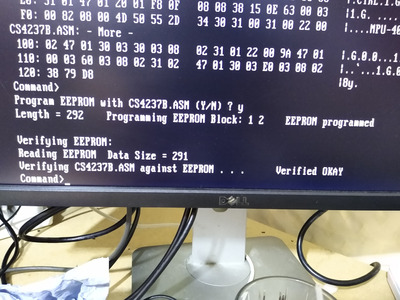Reply 80 of 908, by Mu0n
- Rank
- Member
640K!enough wrote on 2021-06-21, 18:39:Lastly, the ASM file being compared is not the most recent one posted, as the IFM bit is still missing. I didn't compare byte-by-byte, but the rest looks mostly right.
in the first post with hostload (Re: Tiny Vortex86-based DOS gaming PC - weeCee) this line was used:
DB 00CH ; GCB1: WTEN SPS
which you then corrected in this post (Re: Tiny Vortex86-based DOS gaming PC - weeCee) to this line:
DB 084H ; GCB1: IFM SPS
but I posit it should be this instead:
DB 08CH ; GCB1: IFM SPS WTEN
there's also a reference to WTEN elsewhere in the documentation, as part of byte C8 (CS9236 Wavetable Control C8)

is that something that must be deal with in the ASM file as well, or is it an control byte that happens as per midi operations
edit - I guess WTEN is not super useful in this project, seeing as XD7-XD5 are connected to nothing..
1Bit Fever Dreams: https://www.youtube.com/channel/UC9YYXWX1SxBhh1YB-feIPPw
DOS Fever Dreams: https://www.youtube.com/channel/UCIUn0Dp6PM8DBTF-5g0nvcw

